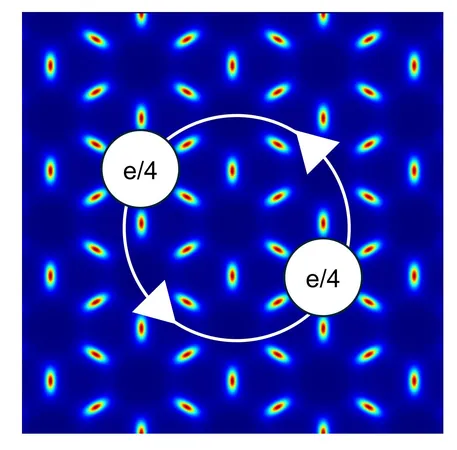
Scientists Unveil Game-Changing Exotic Matter That Could Revolutionize Quantum Computing
2024-11-18
Author: Amelia
Introduction
In a groundbreaking study published by MIT physicists, researchers have predicted the creation of an extraordinary form of matter that could serve as the fundamental building blocks—qubits—for a new generation of quantum computers, potentially outstripping the capabilities of today’s systems. This exciting development stems from recent advancements related to fractionalized electrons, a phenomenon observed over three decades ago that has implications for next-level computing technology.
Electron Fractionalization and Anyons
The concept of electron fractionalization, which enables electrons to break into smaller versions of themselves, was first recognized in 1982, earning its discoverers a Nobel Prize. Traditionally, this splitting required a magnetic field, presenting limitations on the types of materials that could be utilized. However, the new findings indicate that electrons can be fractionalized without relying on magnetic fields, significantly broadening the experimental landscape and opening avenues for practical applications.
When electrons undergo this fractionalization, they produce entities called anyons, which come in various forms. The research, detailed in the October 17 issue of Physical Review Letters, emphasizes the discovery of non-Abelian anyons, which possess a unique property: they can 'remember' the paths they take through space-time. This characteristic could be pivotal for advancing quantum computing by facilitating more reliable and powerful computing systems.
Research Insights and Future Prospects
Liang Fu, the lead researcher from MIT's Department of Physics, stated, "The results we've seen from the 2023 experiments have surpassed theoretical predictions. This encourages theorists, like myself, to be more audacious in our hypotheses." Fu is affiliated with MIT's Materials Research Laboratory, where he collaborates with graduate students Aidan P. Reddy and Nisarga Paul, who contributed significantly to this groundbreaking research.
The impact of this study extends beyond theoretical implications; Physics Magazine highlighted its relevance to real-world applications. If experimental verification of these predictions is achieved, it could usher in a new era of quantum computing—allowing for the execution of complex computational tasks with unprecedented reliability. Techniques for manipulating non-Abelian states as practical qubits have already been conceptualized, paving the way for future innovations in quantum technology.
Moiré Materials: The Vanguards of Anyon Research
Key to these findings is the development of 2D materials, which consist of thin layers of atoms. Researchers have been experimenting with stacking and twisting these materials to create unique properties. The current work demonstrated that anyons can form within moiré materials—complex structures featuring overlapped layers of atom-thin substances. Notably, the study revealed non-Abelian anyons could emerge from a moiré structure comprised of molybdenum ditelluride.
Reddy pointed out the intriguing states that arise when adding electrons in specific densities, such as 3/2 or 5/2 per unit cell, effectively supporting the presence of non-Abelian anyons. Both Reddy and Paul expressed excitement about the collaborative nature of this research, merging theoretical complexity with tangible numerical results. "This project bridged the gap between theoretical concepts and practical computations, enriching our understanding of unexplored territories in quantum physics," noted Paul.
Conclusion
To summarize, the MIT physicists' work opens an exhilarating chapter in the quest for more efficient and powerful quantum computers, demonstrating just how close we are to harnessing exotic states of matter for practical technological applications. The future of computing may just rest on these groundbreaking discoveries! Stay tuned as we follow the experimental confirmations and real-world applications that emerge from this riveting field of research.









 Brasil (PT)
Brasil (PT)
 Canada (EN)
Canada (EN)
 Chile (ES)
Chile (ES)
 España (ES)
España (ES)
 France (FR)
France (FR)
 Hong Kong (EN)
Hong Kong (EN)
 Italia (IT)
Italia (IT)
 日本 (JA)
日本 (JA)
 Magyarország (HU)
Magyarország (HU)
 Norge (NO)
Norge (NO)
 Polska (PL)
Polska (PL)
 Schweiz (DE)
Schweiz (DE)
 Singapore (EN)
Singapore (EN)
 Sverige (SV)
Sverige (SV)
 Suomi (FI)
Suomi (FI)
 Türkiye (TR)
Türkiye (TR)